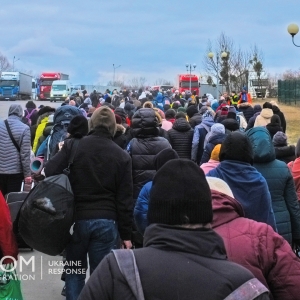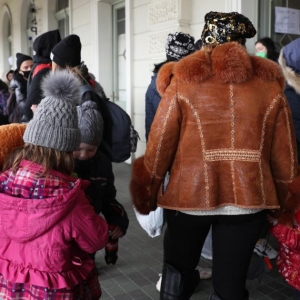Key information
Country/ies
Afghanistan, Albanie, Algérie, Andorre, Angola, Antigua-et-Barbuda, Argentine, Arménie, Australie, Autriche, Azerbaïdjan, Bahamas, Bahreïn, Bangladesh, Barbade, Bélarus, Belgique, Belize, Bénin, Bhoutan, Bolivie (État plurinational de), Bosnie-Herzégovine, Botswana, Brésil, Brunéi Darussalam, Bulgarie, Burkina Faso, Burundi, Cabo Verde, Cambodge, Cameroun, Canada, République centrafricaine, Tchad, Chili, Chine, Colombie, Comores, Congo, Rep., Costa Rica, Côte d’Ivoire, Croatie, Cuba, Chypre, Tchéquie, République populaire démocratique de Corée, République démocratique du Congo, Danemark, Djibouti, Dominique, République dominicaine, Équateur, Égypte, El Salvador, Guinée équatoriale, Estonie, Eswatini, Éthiopie, Falkland Islands, Fidji, Finlande, Former Yugoslavia, France, Gabon, Gambie, Géorgie, Allemagne, Ghana, Grèce, Grenade, Guatemala, Guinée, Guinée-Bissau, Guyana, Haïti, Honduras, Hongrie, Islande, Inde, Indonésie, Iran (République islamique d’), Iraq, Irlande, Israël, Italie, Jamaïque, Japon, Jordanie, Kazakhstan, Kenya, Kiribati, Koweït, Kirghizistan, République démocratique populaire lao, Lettonie, Liban, Lesotho, Libéria, Libye, Liechtenstein, Lituanie, Luxembourg, Madagascar, Malawi, Malaisie, Maldives, Mali, Malte, Îles Marshall, Mauritanie, Maurice, République de, Mexique, Micronésie (États fédérés de), Monaco, Mongolie, Monténégro, Maroc, Mozambique, Myanmar, Namibie, Nauru, Népal, Pays-Bas, Nouvelle-Zélande, Nicaragua, Niger, Nigéria, Macédoine du Nord, Norvège, Oman, Pakistan, Palaos, Panama, Papouasie-Nouvelle-Guinée, Paraguay, Pérou, Philippines, Pologne, Portugal, Qatar, République de Corée, République de Moldova, Roumanie, Fédération de Russie, Rwanda, Saint-Kitts-et-Nevis, Sainte-Lucie, Saint-Vincent-et-les Grenadines, Samoa, Saint-Marin, Sao Tomé-et-Principe, Arabie saoudite, Sénégal, Serbie, Serbia and Montenegro, Seychelles, Sierra Leone, Singapour, Saint-Martin (partie néerlandaise), Slovaquie, Slovénie, Îles Salomon, Somalie, Afrique du Sud, Soudan du Sud, Espagne, Sri Lanka, Occupied Palestinian Territory, Soudan, Suriname, Suède, Suisse, République arabe syrienne, Tadjikistan, République-Unie de Tanzanie, Thaïlande, Timor-Leste, Togo, Tonga, Trinité-et-Tobago, Tunisie, Türkiye, Turkménistan, Tuvalu, Ouganda, Ukraine, Émirats arabes unis, Royaume-Uni de Grande-Bretagne et d’Irlande du Nord, États-Unis d’Amérique, Uruguay, Ouzbékistan, Vanuatu, Venezuela (République bolivarienne du), Viet Nam, Yemen, Zambia, Zimbabwe
Data sources
Summary
The project consists of developing an open statistical software package using historical data on human displacement post-disasters to forecast future displacement trends after catastrophes, specifically, earthquakes and cyclones. It aims to help governments and international organizations more rapidly allocate resources to facilitate recovery, estimate more accurately the displaced population, predict potential settlement "hotspots," and estimate the optimal shelter locations for a precise number of people.
The software package has two main two components:
- a back-end system that combines the data, a model, and state-of-the-art statistical methods into a predictive tool, and
- an interactive front-end system that visualizes the data and predictions.
Results
The tool has predicted past displacement estimates for over 100 earthquakes in 38 different countries with at least ten times more accuracy than the world-leading risk models produced by the United States Geological Survey (USGS) and the Global Disaster Alerting Coordination System (GDACS).
The tool's software, which uses displacement estimates based on mobile phone data provided by organisations such as Flowminder or Facebook Data for Good, has produced a detailed mapping of the returned and displaced populations over time. This methodology has been implemented with data-holders such as Flowminder and Meta Data for Good.
The tool is currently being integrated into the Internal Displacement Monitoring Centre (IDMC)’s risk models and there are discussions to integrate it into the International Federation of the Red Cross (IFRC)’s risk models.
Last modified
28 July 2022




